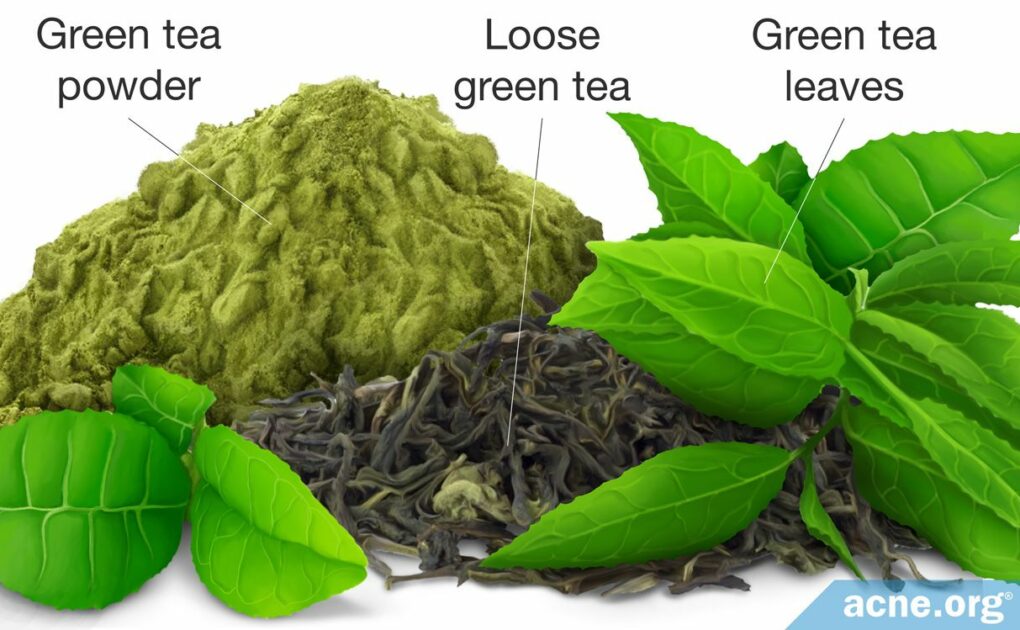Studies Show That It May to Some Degree

The Essential Info
You will often find green tea extract, sometimes referred to as EGCG, in skincare products. It is a welcome ingredient.
Green tea (EGCG) is good for the skin because it is:
- An antioxidant
- Able to help improve wound healing
- Antibacterial
- Protective against the sun’s rays
- Preventative against certain types of skin cancer
Topical green tea has also been shown in studies to improve mild-to-moderate acne to some degree.
Beware of “Label Claim”: Many, if not most, skincare products include extracts simply for what is called “label claim.” This means they put a tiny amount in the product just so they can list it on the label. So, unfortunately, just because you see it in a product doesn’t mean it is in the product at an amount that will help.

The Science
- Chemical Components of Green Tea
- Effect of Green Tea on Skin Health and Acne
- Studies on Green Tea and Acne
Green, black, and oolong tea are all produced from the same plant, Camellia sinensis. The manufacturing process of green tea is the least damaging to the leaves, involving a simple process of steaming the leaves immediately after harvesting. This immediate and gentle processing allows for green tea to retain the majority of the nutrients and chemicals found within the plant. Scientists have found that these nutrients provide green tea with a variety of health benefits for the skin, which includes the potential to improve acne.1-3
Chemical Components of Green Tea
Green tea leaves contain nearly 4000 different chemicals. The majority of these chemicals are proteins, fibers, minerals, and fats. However, nearly 30% are molecules called polyphenols. Polyphenols act as antioxidants, meaning that they can counteract harmful chemicals called free radicals, which are thought to contribute to acne.
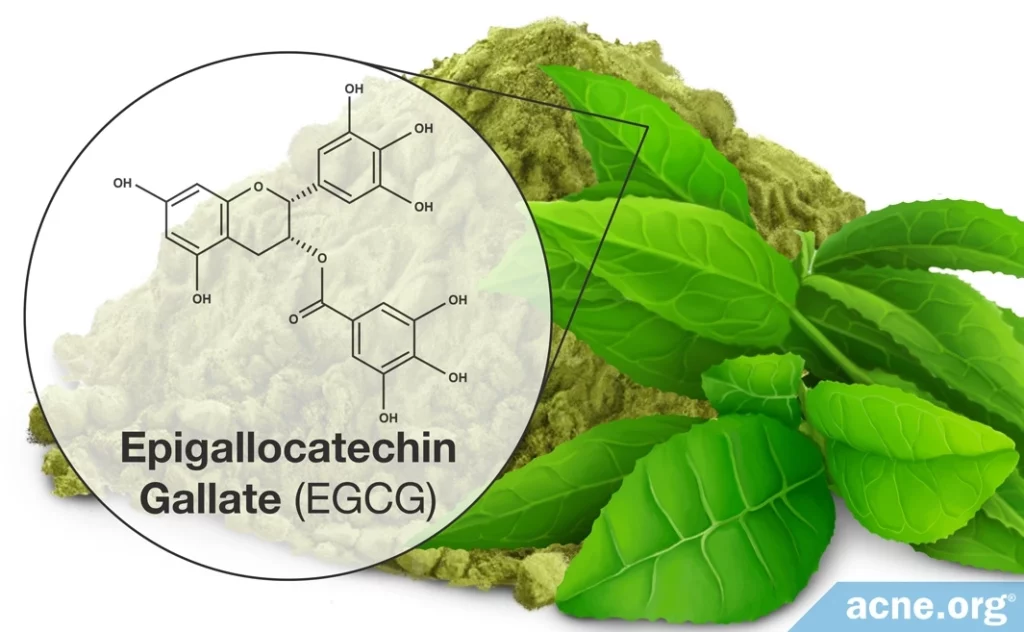
Within the polyphenol class of chemicals, a specific molecule called epigallocatechin gallate (EGCG) is especially beneficial.1,3,4 When you see a product that has “green tea extract” in it, more often than not, it is primarily EGCG.
Effect of Green Tea on Skin Health and Acne
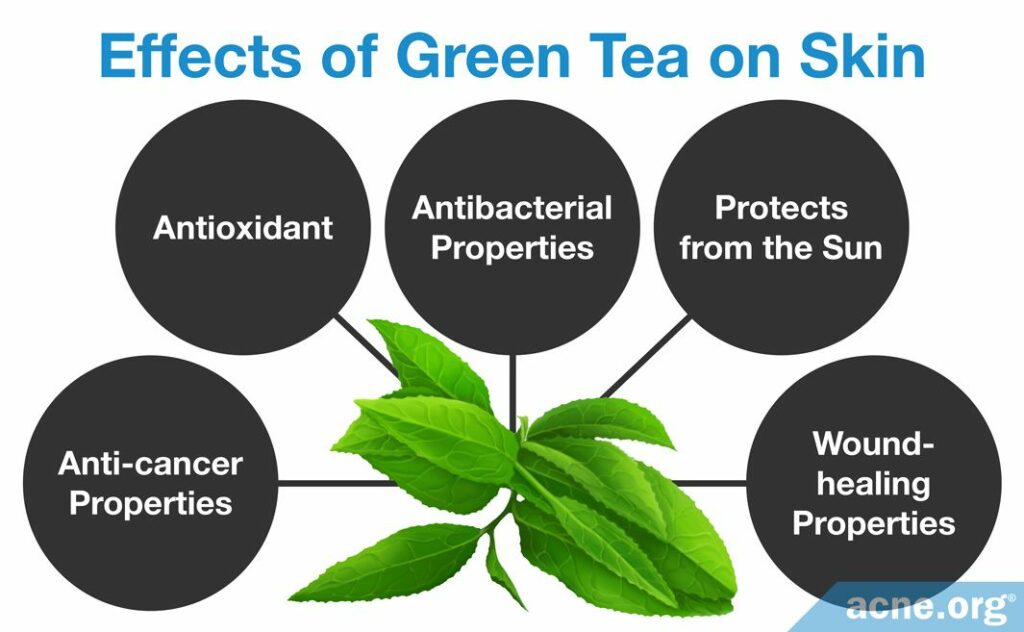
Scientists have found that green tea polyphenols like EGCG provide a number of health benefits for the skin, most of which could also help with acne.
- Green tea acts as an antioxidant, which protects the skin from harmful free radicals.1
How this might help acne: Free radicals are thought to lead to inflammation in the skin, and acne is an inflammatory disease.
- EGCG helps wound healing and regeneration by regulating skin cell growth and death.
How this might help acne: Medically speaking, acne lesions are small wounds, and acne scars result when those wounds heal imperfectly.4-6
- Topical green tea also possesses antibacterial properties. Research shows that topical EGCG and green tea extracts are effective against bacteria in the skin.7,8
How this might help acne: Acne bacteria makes acne worse.
- Topical green tea possesses a photopreventative effect, meaning that it can protect the skin from the sun’s ultraviolet (UV) rays.4
How this might help acne: Sunburns are skin damage that can lead to acne in the weeks following overexposure.
- Green tea polyphonols’ antioxidant properties give topical green tea anticancer properties too. Studies investigating topical green tea on mice have found that it protected against skin cancer.4
This isn’t acne-related, but it’s still pretty cool.
Studies on Green Tea and Acne
In addition to the overall skin benefits, scientists have discovered that topical green tea may improve acne.
A higher amount of skin oil and male hormones (male hormones are found in both males and females) are both linked with increased acne severity. Multiple studies investigating EGCG and acne have found that topical EGCG reduces skin oil production and decreases the activity of certain male hormones after eight weeks of daily application.9-11
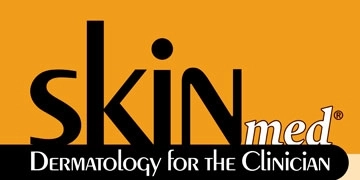
A 2006 study investigated the daily application of a 2% topical green tea lotion applied daily for eight weeks. They found that 64% of participants who applied the lotion daily experienced a reduction greater than 50% in the number of acne lesions.12

Two studies performed in 2008 and 2009 repeated the 2006 study design and found that 60% of study participants who applied a 2% green tea lotion saw a reduction greater than 50% in the number of acne lesions.13,14
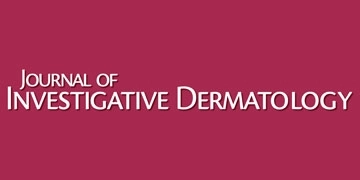
A 2013 study observed acne patients who applied either a 1% green tea lotion or a 5% green tea lotion daily for eight weeks. Participants applying either concentration of green tea noticed a 79 – 89% improvement in mild to moderate acne after eight weeks. That is to say, the 1% concentration of green tea demonstrated equivalent efficacy to the 5% green tea lotion.15
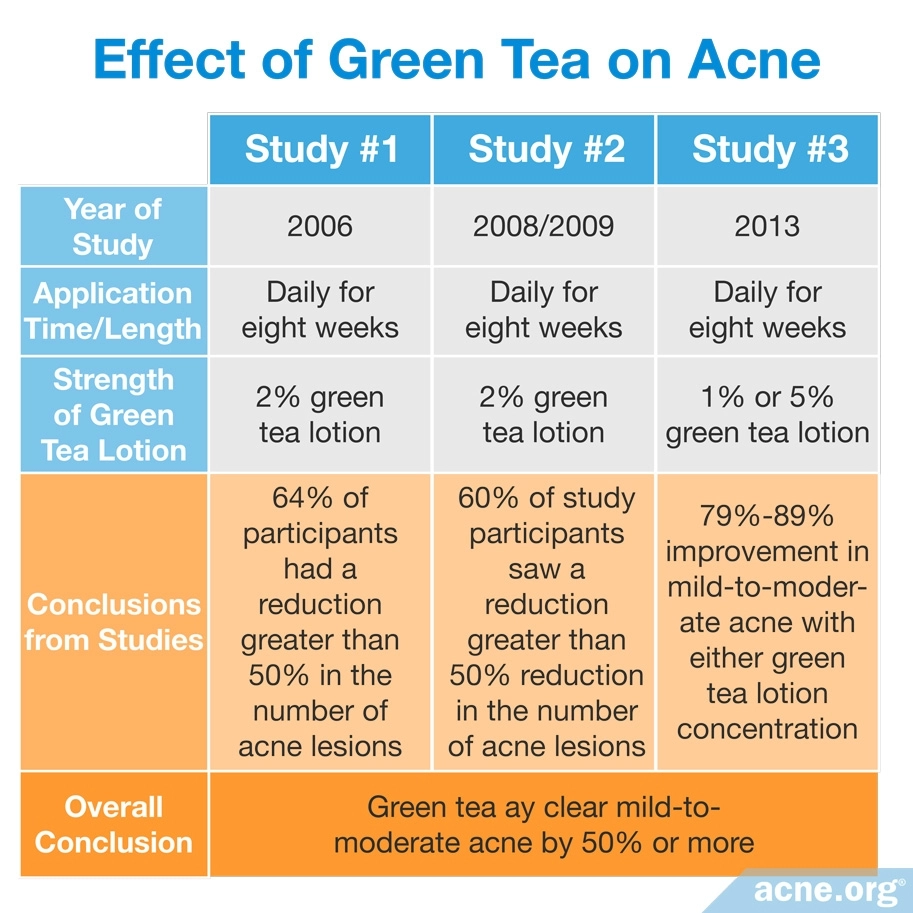
References
- Chacko, S. M. et al. Beneficial effects of green tea: A literature review. Chin Med 5, 1 – 9 (2010). https://www.ncbi.nlm.nih.gov/pmc/articles/PMC2855614/
- Katiyar, S. K., Ahmad, N. & Mukhtar, H. Green tea and skin. Arch Dermatol 136, 989 – 994 (2000). https://www.ncbi.nlm.nih.gov/pubmed/10926734
- Namita, P., Mukesh, R. & Vijay, K. J. Camellia sinensis (green tea): A Review. Glob J Pharmacol 6, 52 – 59 (2012). https://pdfs.semanticscholar.org/e55e/0b32e117c3a0ad1dc2277083c8d294f246c1.pdf
- Hsu, S. Green tea and the skin. J Am Acad Dermatol 52, 1049 – 1059 (2005). https://www.ncbi.nlm.nih.gov/pubmed/15928624
- Frasheri, L., Schielein, M. C., Tizek, L., Mikschl, P., Biedermann, T. & Zink, A. Great green tea ingredient? A narrative literature review on epigallocatechin gallate and its biophysical properties for topical use in dermatology. Phytother Res 34, 2170-2179 (2020). https://pubmed.ncbi.nlm.nih.gov/32189392/
- Sharangi, A. B. Medicinal and therapeutic potentialities of tea (Camellia sinensis L.) – A review. Food Res Int 42, 529 – 535 (2009). http://www.7starsma.com/images/TEA-Article-13.pdf
- Jeon, J., Kim, J. H., Lee, C. K., Oh, C. H., Song, H. J. The antimicrobial activity of (-)-epigallocatehin-3-gallate and green tea extracts against Pseudomonas aeruginosa and Escherichia coli isolated from skin wounds. Ann Dermatol 26, 564-569 (2014). https://www.ncbi.nlm.nih.gov/pubmed/25324647
- Kalalinia, F., Amiri, N., Mehrvarzian, N., Fazly Bazzaz, B. S., Iranshahi, M., Shahroodi, A., Arabzadeh, S., Abbaspour, M., Badiee Aaval, S. & Movaffagh, J. Topical green tea formulation with anti-hemorrhagic and antibacterial effects. Iran J Basic Med Sci 23, 1085-1090 (2020). https://pubmed.ncbi.nlm.nih.gov/32952956/
- Pazyar, N., Feily, A. & Kazerouni, A. Green tea in dermatology. Skinmed 10, 352 – 355 (2012). https://www.ncbi.nlm.nih.gov/pubmed/23346663
- Liao, S. The medicinal action of androgens and green tea epigallocatechin gallate. Hong Kong Med J 7, 369 – 374 (2001). https://www.ncbi.nlm.nih.gov/pubmed/11773671
- Mahmood, T. et al. Outcomes of 3% green tea emulsion on skin sebum production in male volunteers. Bosn J Basic Med Sci 10, 260 – 264 (2010). https://www.ncbi.nlm.nih.gov/pubmed/20846135
- Sharquie, K. E., Al-Turfi, I. A. & Al-Shimary, W. M. Treatment of acne vulgaris with 2% topical tea lotion. Saudi Med J 27, 83 – 85 (2006). https://www.ncbi.nlm.nih.gov/pubmed/16432600
- Sharquie, K. E., Noaimi, A. A. & Al-Saleh, M. M. Topical therapy of acne vulgaris using 2% tea lotion in comparison with 5% zinc sulphate solution. Saudi Med J 29, 1757 – 1761 (2008). https://www.ncbi.nlm.nih.gov/pubmed/19082228
- Elsaie, M. L. et al. The efficacy of topical 2% green tea lotion in mild-to-moderate acne vulgaris. J Drugs Dermatol 8, 358 – 364 (2009). https://www.ncbi.nlm.nih.gov/pubmed/19363854
- Yoon, J. Y. et al. Epigallocatechin-3-gallate improves acne in humans by modulating intracellular molecular targets and Inhibiting P. acnes. J Investig Dermatol 133, 429 – 440 (2013). https://www.ncbi.nlm.nih.gov/pubmed/23096708
 Acne.org Products
Acne.org Products